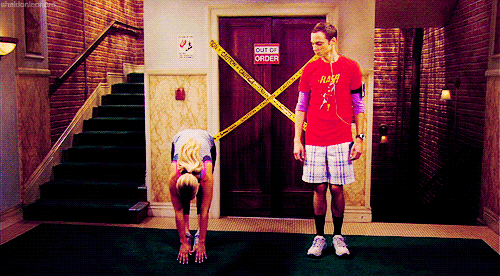Hollywood is notorious for perpetuating certain medical myths and misconceptions, so it should come as no surprise that when it comes to the medical field there a few things that movies and TV always seems to get wrong:
1. You Should Keep Severed Digits on Ice

In The Simpsons episode, “Trilogy of Error,” Marge accidentally cuts off Homer’s thumb, but he’s able to reattach the digit after it’s carefully preserved on ice. This is a common technique to deal with severed fingers in film and TV, but doctors say that ice can actually damage the blood vessels in the finger and make reattachment more difficult. Instead, you should keep the digit cold, but not icy.
2. Drowning Is a Violent Struggle

In movies, drowning is usually depicted as a violent struggle with lots of shouting and flailing. However, according to experts, drowning is usually a quiet, subdued affair. In most cases, victims are unable to voluntarily move their arms or even call for help.
3. Everything About Childbirth

Dozens of movies and TV shows portray pregnancy and child birth, but not very well. Every film birth begins with the water breaking, but according to the Mayo Clinic, the “rupturing of the membrane” isn’t necessarily the first thing to happen. Also, most movie couples rush to the hospital immediately, but that’s not necessary. In fact, it’s actually recommended that the mother-to-be relax and take it easy before heading to the hospital.
4. Hypothermia Only Strikes in Cold Weather

Most people would assume hypothermia usually strikes in freezing conditions in the dead of night. However, it’s not uncommon for people to catch hypothermia during the summer. For hypothermia to occur, your core body temperature needs to drop below 95° F and most summer time hypothermia victims succumb to the illness due to an inability to dress or plan for potential weather changes. Because people don’t usually plan for cold weather in summer, when the temperature drops or it starts to rain, it can become deadly for the under-prepared.
5. Stretching Is Good for You

If a filmmaker needs someone to have a conversation before working out, there’s a good chance they’ll just make the actors stretch for the entire scene. However, there is some debate in the medical community about the effects of stretching. Some scientists are starting to agree that stretching does nothing and the most common positive benefit seems to be stretching is “fun.”
6. You Shouldn’t Wake Sleepwalkers

If a movie or TV show features a sleepwalker, there’s a good chance another character will spout the age old advice, “Never wake a sleepwalker.” Waking a sleepwalker can supposedly lead to injury or death, but there’s no medical basis for this myth. According to Dr. Mark R. Pressman, “It’s not dangerous for the sleepwalker to wake him up… You’re not going to do them any harm.”
7. You Only Use 10 Percent of Your Brain

This oft-repeated myth was allegedly started by Albert Einstein and was used as the premise for two movies, Lucy and Limitless, as well as the upcoming Limitless TV series. But it’s absolute nonsense and humans obviously use their entire brain. According to Barry Gordon from Johns Hopkins School of Medicine, “It turns out though, that we use virtually every part of the brain, and that [most of] the brain is active almost all the time… Let’s put it this way: the brain represents three percent of the body’s weight and uses 20 percent of the body’s energy.”
8. Emergency Syringes Save Lives

From Nicolas Cage in The Rock to Uma Thurman and John Travolta in Pulp Fiction, an emergency syringe injected straight into the heart is a dramatic and effective way to save someone’s life on screen. It’s known as a ‘intracardiac injection’ and, admittedly, it works at resuscitating patients in real life. However, it’s great at nearly killing them as well.
The technique was popular in the 1960s, but fell out of favor due to complications including lungs collapsing (pneumothorax), the sac surrounding the heart filling with blood and causing the heart to fail (hemopericardium), the arteries leading to the heart tearing and causing massive internal bleeding, an air embolism getting into the bloodstream and killing the patient outright, as well as good ol’ fashioned infection. Instead, Uma Thurman should have taken the medicine intravenously.

